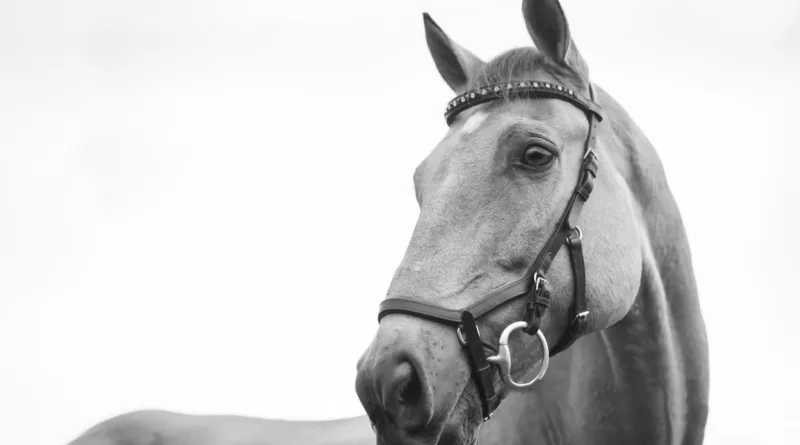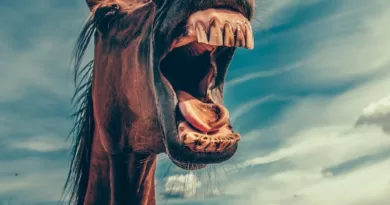How Strong Is a Horse Kick
Horse Anatomy and Muscle Development
The anatomy of horses is a fascinating subject, especially when it comes to understanding their muscle development. Horses have a muscular system that is crucial for their ability to move and perform various tasks. These magnificent creatures rely on their muscles for everything, from galloping across fields to jumping over obstacles.
When it comes to muscle development, horses are known for their impressive strength and power. Their muscles are highly developed and well-toned, allowing them to generate the force needed for quick and agile movements. The muscles in their legs and hindquarters are particularly well-developed, as these areas provide the primary source of power for activities like running and jumping. It’s this incredible muscle development that enables horses to excel in various equestrian disciplines, demonstrating their athleticism and grace.
Horse Kick Force Measurement
Horse Kick Force Measurement is a crucial aspect when it comes to understanding the power behind these mighty kicks. Through scientific analysis and research, experts have been able to obtain valuable data on the force generated by a horse’s kick. The measurement is typically done using specialized instruments that are designed to record and quantify the impact of the kick. By accurately measuring the force exerted, researchers can gain insights into the potential damage a horse kick can cause and implement safety precautions accordingly.
To measure the force of a horse kick, scientists utilize devices such as force plates or pressure sensors. These instruments are strategically placed in areas that are likely to come in contact with the horse’s kick, such as a wall or a protective padding. When the horse delivers a kick, the force is transferred into the instrument, which then records the data. By analyzing the recorded measurements, experts can determine the magnitude of the force generated by the kick, allowing for a better understanding of the potential impact on both humans and other animals.
Comparing Horse Kicks to Other Animal Kicks
Horses are known for their impressive strength and power, which is also evident in their ability to deliver powerful kicks. When comparing horse kicks to kicks from other animals, it becomes clear that horses possess a unique combination of force and agility.
One of the animals often used as a reference point is the zebra. While zebras are closely related to horses, their kicks do not pack the same punch. The size and weight of a horse contribute to its kicking force, allowing it to deliver more impact compared to a zebra. Additionally, the muscular structure of a horse’s hind limbs plays a significant role in generating this force. When observing horse kicks alongside zebra kicks, the difference in power becomes evident, with horses displaying greater strength and intensity.
The Impact of Horse Kick on Human Bones
Horse kicks can deliver a tremendous amount of force, posing a significant risk to human bones. The impact of a horse kick on human bones can result in various types of fractures or even complete shattering of the affected bone. The bones most vulnerable to such trauma are typically those located in the lower extremities, especially the shinbone (tibia) and the delicate bones of the foot. These bones may bear the brunt of the force, leading to severe injuries that can be debilitating and require extensive medical intervention.
When a horse forcefully strikes its hoof against a human bone, the force exerted can be compared to that of a heavy blunt object or the impact of a car collision at high speed. This immense force can easily overwhelm the structural integrity of human bones, causing severe damage. Additionally, the sharp edges of a horse’s hoof may exacerbate the injury by lacerating the soft tissues surrounding the affected area, further complicating the healing process. Consequently, it is crucial to recognize the potential danger of horse kicks and take appropriate precautions to minimize the risk of such injuries.
Case Studies: Injuries Caused by Horse Kicks
Horse kicks can result in serious injuries, both to humans and other horses. Case studies conducted on individuals who have been kicked by horses have provided valuable insights into the kind of damage that can occur. In one particular case, a woman sustained a fractured rib when she was kicked by a horse while grooming it. The force of the impact caused significant pain and limited her mobility for several weeks. Another case study involved a veterinarian who was kicked by a horse during a routine examination. The veterinarian suffered a broken finger and received multiple bruises and contusions. These case studies highlight the potential dangers of horse kicks and underscore the importance of taking precautions when handling these powerful animals.
Understanding the Mechanics of a Horse Kick
Horse kicks are powerful and potentially dangerous, making it important to understand the mechanics behind them. When a horse kicks, it primarily relies on its hind legs for force and impact. The muscular structure of a horse’s hindquarters plays a vital role in generating this power. The large muscles of the hind legs, particularly the gluteal and hamstring muscles, are responsible for propelling the leg forward and delivering a strong, forceful kick. Additionally, the tendons and ligaments in the hind legs provide stability and support during a kick.
To execute a kick, a horse typically extends its hind leg forward and then rapidly extends it outwards, striking the target with either the hooves or the powerful bony area just above them. The force generated during a kick is a result of the horse’s musculoskeletal system working together harmoniously. The sheer size and strength of a horse’s hind leg muscles, combined with the speed and precision of the movement, contribute to the significant impact that a horse kick can have.
Understanding the mechanics of a horse kick is essential for anyone working with horses. By knowing how the muscles, tendons, and ligaments work together during a kick, individuals can better anticipate and avoid potentially dangerous situations. Moreover, this knowledge can also aid in the development of effective safety measures and protocols to minimize the risks associated with horse kicks.
The Role of Horse Breed in Kick Strength
Horse breed plays a significant role in determining the strength and power of a horse’s kick. Different breeds have distinct physical characteristics and muscle structures, which directly influence their ability to generate force with their hind legs. For example, larger and heavier breeds, like Percherons and Shire horses, possess stronger hindquarters and greater muscle mass, enabling them to deliver more powerful kicks. On the other hand, smaller and lighter breeds, such as Arabians and Thoroughbreds, may not have the same level of strength behind their kicks but tend to compensate with agility and speed.
Additionally, certain horse breeds have been selectively bred for specific purposes, such as racing or pulling heavy loads. This targeted breeding has led to variations in the development of muscle groups involved in kicking. Breeds designed for speed, like Quarter Horses and Standardbreds, often possess more explosive power in their hind legs, enabling them to generate high kick forces in short bursts. Conversely, draft horse breeds, like Clydesdales and Belgians, have been bred for pulling strength, resulting in powerful kicks that can deliver substantial force over a sustained period. Understanding the role of horse breed in kick strength is crucial for horse owners, trainers, and handlers to effectively manage and anticipate the potential risks associated with horse kicks.
Training and Conditioning for Horse Kick Power
To maximize a horse’s kick power, proper training and conditioning are essential. Firstly, a well-rounded exercise program should include activities that focus on strengthening the horse’s core muscles. These exercises can include lunging, long-reining, and hill work, which help to develop the horse’s abdominal and back muscles. By increasing the strength of these muscles, the horse will be able to generate more power and force in its kicks.
In addition to core strength, a horse’s leg muscles also play a crucial role in kick power. Exercises that target the hindquarters, such as trotting over cavaletti poles or engaging in controlled canter work, can help to develop the horse’s leg muscles and increase their overall strength. Incorporating occasional interval training sessions into the horse’s routine can further enhance their power and explosiveness in kicking actions. However, it is essential to ensure that the horse’s training program is gradually increased in intensity to avoid overexertion or injury.
Safety Precautions to Avoid Horse Kick Injuries
When working with horses, it is essential to prioritize safety precautions to minimize the risk of horse kick injuries. Firstly, it is crucial to maintain a calm and composed demeanor around horses, as they are highly sensitive animals that can easily get startled. Loud noises, sudden movements, or approaching them from behind can startle them, increasing the likelihood of a kick. Therefore, it is recommended to move slowly and approach the horse from the front, allowing them to see you and become aware of your presence.
Additionally, it is important to establish a clear line of communication between you and the horse. This can be achieved through consistent training and building a bond of trust. Understanding the body language and signals of the horse can help to anticipate any signs of discomfort or agitation, allowing you to take necessary precautions and avoid potential kicks. Furthermore, it is advisable to handle the horse’s hindquarters with caution, as this is the area where kicks are most likely to occur. Always approach the hindquarters from an angle and avoid standing directly behind the horse to reduce the risk of being in the trajectory of a kick.
Tips for Handling Horses to Minimize the Risk of Kicks
When handling horses, it is important to prioritize safety and take necessary precautions to minimize the risk of kicks. Firstly, approach the horse calmly and quietly, avoiding sudden movements or loud noises that may startle the animal. Always make your presence known, either by speaking softly or gently touching the horse as you approach. This will allow the horse to be aware of your presence and reduce the chances of a sudden kick due to surprise.
Secondly, be mindful of the horse’s personal space. Give the horse ample room to move freely and avoid standing directly behind or too close to the hindquarters. This is the area where horses are most likely to deliver powerful kicks. Maintaining a safe distance and positioning yourself to the side will help reduce the risk of being a target during sudden movements or behavior changes.
By implementing these simple tips, handlers can greatly reduce the risk of being kicked by a horse. Remember, always prioritize safety and approach horses with caution and respect.
Why is it important to minimize the risk of horse kicks?
Minimizing the risk of horse kicks is important because they can cause serious injuries to humans, including broken bones and internal organ damage.
What is horse anatomy and muscle development?
Horse anatomy refers to the structure and organization of a horse’s body, while muscle development refers to the growth and strengthening of a horse’s muscles.
How is horse kick force measured?
Horse kick force can be measured using specialized equipment that calculates the amount of force exerted by a horse’s kick.
How do horse kicks compare to kicks from other animals?
Horse kicks are generally much stronger than kicks from other animals, due to the size and muscle power of horses.
What is the impact of a horse kick on human bones?
A horse kick can cause significant damage to human bones, potentially resulting in fractures or breaks.
Are there any case studies on injuries caused by horse kicks?
Yes, there are case studies available that document injuries caused by horse kicks, which can provide valuable insights into the severity and impact of these incidents.
What are the mechanics of a horse kick?
The mechanics of a horse kick involve a combination of muscle power, extension of the leg, and the force exerted by the horse to strike with its hoof.
Does horse breed affect kick strength?
Yes, different horse breeds can have varying levels of kick strength, with some breeds known for having more powerful kicks than others.
How can training and conditioning affect horse kick power?
Training and conditioning can help strengthen a horse’s muscles and improve its overall power, potentially affecting the strength of its kicks.
What safety precautions should be taken to avoid horse kick injuries?
Safety precautions such as maintaining a safe distance, being aware of a horse’s body language, wearing appropriate protective gear, and using proper handling techniques can help minimize the risk of horse kick injuries.
What are some tips for handling horses to minimize the risk of kicks?
Some tips for handling horses to minimize the risk of kicks include maintaining a calm and confident demeanor, approaching horses from the side, avoiding sudden movements, and using proper restraint techniques.




